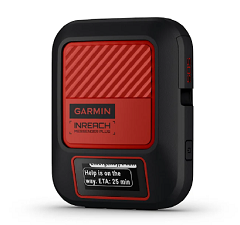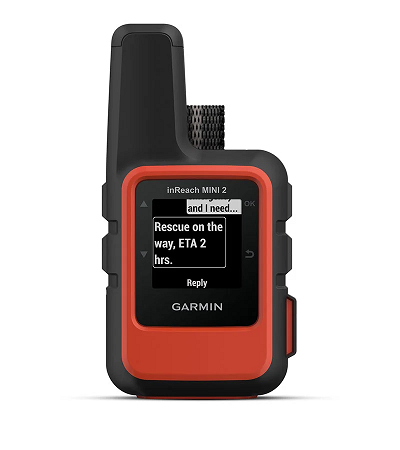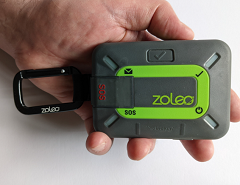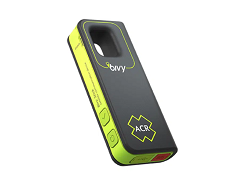There’s nothing quite like the freedom of solo travel. It’s just you, the open road, and the exhilarating feeling of self-reliance. But let’s be real: self-reliance doesn’t mean being reckless. When you’re hiking a remote canyon in Utah, kayaking off the Maine coast, or backpacking through a foreign country with spotty cell service, that “what if” thought can creep in.
What if I twist an ankle? What if I take a wrong turn and get lost? What if my rental car breaks down on a deserted road?
For the modern solo traveler, the answer isn’t to stay home—it’s to pack a digital lifeline. Emergency GPS devices and satellite messengers have revolutionized backcountry safety, turning a potential crisis into a manageable situation. This isn’t just a gadget; it’s your ultimate travel insurance policy for peace of mind.
In 2025, the satellite communication industry has evolved significantly, with improved battery life, enhanced messaging capabilities, and more flexible subscription options. Whether you’re a weekend warrior or a full-time digital nomad, there’s never been a better time to invest in this life-saving technology.
Why Your Smartphone Isn’t Enough
You might be thinking, “I have a phone with maps and GPS.” And that’s great—until you don’t have a signal. Cellular networks cover less than 20% of the Earth’s landmass. Once you wander beyond the bars, your smartphone becomes a camera, at best.
Emergency GPS devices use satellite networks like Iridium or Globalstar. This means they work virtually anywhere on the planet, from the middle of the Sahara Desert to the deepest fjords of Alaska. They are designed for one critical purpose: to get help to you when no other communication method can.
The technology has advanced considerably in recent years. Modern satellite messengers can maintain connections even in challenging terrain where smartphones fail completely. While iPhone satellite connectivity requires real-time connection while actively holding the device, satellite messengers can passively wait for satellites to appear overhead, making them far more reliable in emergency situations.
The Harsh Reality of Cellular Dead Zones
According to recent field testing, even in developed countries like the United States, vast wilderness areas remain without cellular coverage. Popular hiking destinations including portions of the Pacific Crest Trail, Continental Divide Trail, and remote sections of national parks often have zero cellular connectivity for days or weeks at a time.
The difference becomes critical during emergencies. While your smartphone might eventually connect to emergency services if you can reach higher ground or a ridgeline, satellite messengers maintain consistent global coverage regardless of terrain obstacles or atmospheric conditions.
The Two-Way Lifeline: SOS vs. “I’m Okay”
Understanding the fundamental difference between device types is crucial for making the right choice. The satellite communication market has evolved to offer distinct categories serving different user needs and budgets.
PLBs (Personal Locator Beacons): The Emergency-Only Option
PLBs are the no-frills, serious business option designed exclusively for life-threatening emergencies. When activated, they send a distress signal with your GPS coordinates to a global network of search and rescue (SAR) satellites managed by Cospas-Sarsat, an international satellite system.
Key characteristics of PLBs:
- No monthly subscription fees after purchase
- Must be registered with your national authority (NOAA in the U.S., equivalent agencies elsewhere)
- Battery life often exceeds 5-7 years in standby mode
- Completely waterproof and built for extreme conditions
- One-way communication only—no messaging capabilities
- Designed to transmit for 24+ hours continuously once activated
Important considerations: PLBs should only be activated in genuine life-threatening emergencies. False activations result in costly rescues and potential legal consequences. However, when properly used, PLBs boast near-perfect rescue success rates due to their dedicated emergency frequency (406 MHz) and robust signal strength.
Satellite Messengers: The Communication Revolution
The best messenger currently available is the Garmin inReach Messenger Plus, which has nearly flawless emergency and non-emergency messaging capabilities and lets you send photos and short voice memos. This category has exploded in popularity and functionality since 2020.
Modern satellite messengers (including devices from Garmin, SPOT, Zoleo, and others) provide comprehensive two-way communication that transforms how adventurers stay connected:
Core capabilities include:
- Emergency SOS to professional 24/7 monitoring centers
- Two-way text messaging with family, friends, and emergency services
- Real-time location sharing and breadcrumb tracking
- Weather forecasts and severe weather alerts
- Social media integration for trip updates
- Check-in messages with preset locations
- Photo and voice message transmission (on newer models)
The subscription trade-off: Unlike PLBs, satellite messengers require monthly or annual subscription plans typically ranging from $8-$50 per month depending on usage requirements and features. However, for most adventurers, the communication capabilities justify this ongoing cost.
Hybrid Smartphone Integration
A significant development in 2024-2025 has been the integration between satellite messengers and smartphones. While devices like the Garmin inReach Mini 2 allow messaging directly from the device, in practice, most people use the smartphone app for easier message composition. This hybrid approach combines the reliability of dedicated satellite hardware with the user-friendly interface of modern smartphones.
Current Market Leaders: 2025’s Top Picks for Solo Adventurers
Based on extensive field testing and user reviews from major outdoor publications, here are the standout options for 2025:
1. For the Ultimate All-Rounder: Garmin inReach Messenger Plus
Why it leads the pack: The inReach Messenger Plus has nearly flawless emergency and non-emergency messaging capabilities and lets you send photos and short voice memos. This represents Garmin’s most advanced consumer satellite communicator to date.

Key features:
- Iridium satellite network for global coverage
- Photos and voice message transmission
- Integration with Garmin’s ecosystem of outdoor watches and GPS devices
- Robust construction that survives significant impacts
- Advanced SOS features with two-way emergency communication
- Battery life up to 28 days in default mode
- Weather forecasts and barometric alerts
Best for: Serious adventurers who need reliable communication and are willing to invest in premium features.
2. For Proven Reliability: Garmin inReach Mini 2
Even after taking a decent tumble down a rocky trail with the Garmin inReach Mini 2 clipped to a belt loop, testers couldn’t find a scratch on it. This compact powerhouse remains a favorite among minimalist adventurers.

Key advantages:
- Incredibly compact and lightweight (3.5 oz)
- Pairs seamlessly with smartphones via Bluetooth
- Two-way texting and interactive SOS capabilities
- Detailed trip tracking and breadcrumb navigation
- Multiple mounting options for various activities
- Proven durability in extreme conditions
Best for: Weight-conscious travelers who prioritize portability without sacrificing essential features.
3. For Budget-Conscious Communication: Zoleo
The Zoleo remains the value champion, offering essential satellite communication at a lower price point with competitive subscription rates.

Value proposition:
- Lower device cost compared to Garmin alternatives
- Seamless switching between cellular, Wi-Fi, and satellite networks
- Simple smartphone-dependent operation
- More affordable messaging plans
- Global coverage through Iridium network
- Dedicated phone number for text messaging
Best for: Occasional adventurers who want essential safety features without premium pricing.
4. For Simplicity: ACR Bivystick

Streamlined approach:
- Plug-and-play simplicity with minimal learning curve
- Smartphone app-based operation
- Reliable messaging and SOS capabilities
- Competitive pricing for basic features
- Good battery life and build quality
Best for: Users who prefer straightforward operation without complex features or menu systems.
Network Reliability Considerations
Field testing has revealed that the Globalstar network used by devices like the SPOT Gen4 is not as consistent as messengers using the Iridium network, sometimes indicating messages were sent when they were not actually received. This reliability difference has become increasingly important as adventurers rely more heavily on satellite communication for safety.
Iridium vs. Globalstar:
- Iridium: 66 active satellites in low Earth orbit, true global coverage including polar regions
- Globalstar: 24 satellites with coverage gaps in polar regions and some equatorial areas
For solo travelers venturing into remote areas, Iridium-based devices (Garmin inReach series, Zoleo) generally provide more reliable service than Globalstar-based alternatives (SPOT series).
Subscription Plans: The Complete 2025 Cost Breakdown
Understanding subscription costs is crucial for budgeting your satellite communication needs. Garmin changed their inReach subscription plans in 2025, merging previous annual and “freedom” plans into a unified monthly structure with more flexibility.
Garmin inReach Plans (2025 Pricing)
| Plan | Monthly Cost | Annual Cost | Included Texts | Photo/Voice Msgs | Tracking Interval | Overage Fees |
|---|---|---|---|---|---|---|
| Essential | $14.99 | $179.88 | 50 | 10 | Point Tracking | $0.50 / msg |
| Standard | $29.99 | $359.88 | 150 | 25 | Unlimited (10+ min) | $0.50 / msg |
| Premium | $49.99 | $599.88 | Unlimited | 50 | Unlimited (2+ min) | N/A |
| Enabled<sup>*</sup> | $7.99 | $95.88 | 0 | 0 | Point Tracking | $0.10 / preset $0.50 / custom |
Critical details:
- All plans include unlimited SOS messaging through Garmin Response
- One-time $39.99 activation fee applies to new accounts
- Messages sent through Wi-Fi or cellular using the Messenger app don’t count against your plan allotment
- Weather requests count as one message each
- Incoming messages (including replies to check-ins) count against your limit
The “Hidden” Enabled Plan
Garmin’s Enabled Plan is a cost-effective option priced at $7.99 per month, offering unlimited SOS messaging with additional charges for other services: $0.10 for preset messages, $0.50 for custom messages, and $0.50 for weather requests. This pay-per-use model can significantly reduce costs for occasional users.
When Enabled makes sense:
- You primarily want SOS coverage with minimal messaging
- Your usage varies significantly between trips
- You prefer paying only for what you use
Suspension and Flexibility Options
Good news for seasonal users: As of June 2025, Garmin allows users to suspend inReach plans for up to 12 months. During suspension, all satellite-dependent features are disabled, but you can reactivate service anytime without additional activation fees.
Alternative Third-Party Plans
European company ProteGear offers innovative alternative plans using Garmin hardware:
- €49 annual base fee
- Pay-per-day options starting at €3
- Automatic upgrade pricing (if daily costs exceed weekly rates, you’re charged weekly rates)
- Additional features like dedicated email addresses and ChatGPT queries
SPOT and Zoleo Alternatives
While Garmin dominates the subscription conversation, competitors offer different pricing structures:
- SPOT: Generally lower monthly costs but with more restrictive messaging limits
- Zoleo: Competitive pricing with flexible month-to-month options
- Both: Often feature different coverage patterns and reliability metrics
Before You Buy: Critical Considerations for 2025
Subscription Plan Strategy
Both Garmin and SPOT offer middle-tier plans allowing moderate text messaging (100-150 messages monthly), but this includes both send and receive, limiting conversation frequency compared to cellular phones.
Smart planning questions:
- How many days per year will you be beyond cellular coverage?
- Do you need real-time tracking for safety or just periodic check-ins?
- Will family/friends expect regular updates, or is emergency-only sufficient?
- Are you comfortable with pay-per-use pricing, or do you prefer predictable monthly costs?
Contract Length and Flexibility
The satellite communication industry has moved toward greater flexibility:
- Month-to-month options: Most providers now offer contract-free plans
- Seasonal suspension: Available from major providers for inactive periods
- Plan switching: Usually allowed without penalties
- Multi-device accounts: Some plans cover multiple devices under one subscription
Battery Life Realities
Battery performance varies dramatically based on usage patterns:
- Standby mode: Most devices achieve 2-4 weeks between charges
- Active tracking: Reduces battery life to 2-7 days depending on interval settings
- Heavy messaging: Can drain batteries within 24-48 hours
- Temperature effects: Cold weather significantly reduces battery performance
Pro tip: Always carry backup power solutions (power banks, solar chargers) for extended trips.
Understanding SOS Response
When you activate SOS, here’s what actually happens:
- Your device transmits location and emergency code to satellites
- Professional monitoring centers (like GEOS International) receive the alert
- Operators attempt two-way communication to assess the situation
- Local search and rescue authorities are contacted and coordinated
- Response teams are dispatched based on location and reported emergency type
Response times vary by location:
- Urban/accessible areas: 1-4 hours typical
- Remote wilderness: 6-24 hours common
- Extreme remote areas: 24-72 hours possible
Insurance and Rescue Cost Coverage
Search and rescue operations can be expensive, particularly when helicopter evacuations or specialized teams are required.
Garmin SAR 100 Insurance:
- $29.99/year for standard coverage
- Up to $100,000 in eligible rescue costs
- U.S. and Canada only
- High-risk activities cost $299.95/year
- Altitude restrictions apply above 16,404 feet
Alternative coverage options:
- Overwatch & Rescue: $79.99/year for broader international coverage
- Travel insurance with SAR provisions
- Specialized mountaineering/expedition insurance
Advanced Features and Future Considerations
Photo and Voice Messaging
Newer models support photo and short voice memo transmission, representing a significant advancement in emergency communication. These features allow for:
- Visual documentation of injuries or situations
- Voice messages when typing is difficult
- Enhanced communication with rescue coordinators
- Family updates with visual proof of safety
Integration with Wearable Technology
The satellite communication ecosystem increasingly integrates with smartwatches and fitness trackers:
- Automatic incident detection with some watch models
- Seamless message composition and sending from wrist devices
- Integrated navigation and communication workflows
- Health monitoring data transmission during emergencies
Weather Integration and Predictive Alerts
Modern satellite messengers provide increasingly sophisticated weather services:
- Hyperlocal forecasts based on precise GPS coordinates
- Severe weather alerts with recommended actions
- Marine weather for coastal and water-based activities
- Aviation weather for pilots and paragliders
Regional Considerations and International Use
Coverage Variations by Geography
While Iridium provides truly global coverage, practical performance varies:
- Polar regions: Excellent Iridium coverage, limited Globalstar service
- Equatorial zones: Both networks generally reliable
- Mountainous terrain: Iridium typically superior due to orbital patterns
- Dense forest canopy: Both networks may experience delays
Regulatory and Import Considerations
International travelers should research local regulations:
- Some countries restrict or prohibit satellite communicators
- Import duties may apply for temporary visitors
- Registration requirements vary by nation
- Emergency frequency permissions differ globally
Currency and Plan Availability
Subscription plans and pricing vary significantly by region:
- European plans often structured differently than North American options
- Currency fluctuations affect international subscription costs
- Local distributors may offer region-specific plans
- Tax implications vary by country of residence and use
Making the Right Choice: Decision Framework
For Weekend Warriors (1-4 days/month off-grid):
- Recommended: Garmin inReach Mini 2 with Essential or Enabled plan
- Alternative: Zoleo for budget-conscious users
- Budget: $250-400 device + $95-180 annual subscription
For Frequent Adventurers (8-15 days/month off-grid):
- Recommended: Garmin inReach Messenger Plus with Standard plan
- Focus: Unlimited tracking and enhanced messaging capabilities
- Budget: $450-600 device + $360 annual subscription
For Extended Expeditions (Weeks to months off-grid):
- Recommended: Garmin inReach Messenger Plus with Premium plan
- Considerations: Photo/voice messaging, unlimited communication
- Budget: $450-600 device + $600 annual subscription + insurance
For Emergency-Only Users:
- Recommended: Quality PLB (ACR ResQLink, Ocean Signal rescueME)
- Alternative: Garmin inReach with Enabled plan for minimal messaging
- Budget: $200-350 one-time cost (PLB) or $150-300 device + $96 annual
Training and Best Practices
Pre-Trip Preparation
Proper preparation maximizes your device’s effectiveness:
- Test messaging functionality in your home area before departing
- Program emergency contacts with clear instructions about your itinerary
- Understand local rescue resources and typical response capabilities
- Practice SOS procedures without actually activating emergency features
- Configure tracking intervals appropriate for your activity and battery life needs
Message Composition Best Practices
Effective satellite messaging requires different strategies than cellular texting:
- Be concise: Satellite transmission is slower and more expensive than cellular
- Include coordinates: When reporting problems, always include precise location data
- Use clear language: Avoid abbreviations that might be misunderstood
- Confirm receipt: Always request confirmation for critical messages
- Battery awareness: Frequent messaging drains batteries faster than periodic updates
Emergency Protocol Development
Develop clear emergency procedures with your contacts:
- Establish check-in schedules appropriate for your trip length and risk level
- Define escalation procedures for missed check-ins
- Share detailed itineraries with reliable contacts
- Agree on SOS vs. help signal protocols to avoid unnecessary rescue activations
- Document medical information accessible to emergency responders
The Bottom Line: Investment in Independence
Solo travel is about embracing independence, not inviting danger. An emergency GPS device is the tool that empowers you to explore further, push your boundaries, and venture off the beaten path with confidence. It’s the silent travel companion that ensures your story of adventure has a happy ending.
The satellite communication industry has matured significantly, offering reliable, feature-rich options at various price points. Whether you choose a basic PLB for emergency-only coverage or a full-featured satellite messenger for comprehensive communication, the peace of mind is invaluable.
Investment perspective:
- Device costs: $150-600 depending on features
- Annual subscriptions: $95-600 depending on usage needs
- Rescue insurance: $30-300 annually for enhanced coverage
- Total annual cost: Often less than a single emergency room visit or helicopter rescue
The technology works. Field testing across thousands of miles of remote terrain confirms that modern satellite communicators reliably connect users with help when traditional communication fails. Testing across major long-distance trails including the Continental Divide Trail and Pacific Crest Trail demonstrates consistent emergency response reliability.
Invest in one. Train with it. And then go see the world, knowing you’ve got a lifeline in your pocket that works anywhere on Earth.
Your adventures are calling—answer with confidence, knowing that help is always just a button press away, no matter how far from civilization your journey takes you.
Frequently Asked Questions
Can I use my satellite messenger internationally?
Yes, Iridium-based devices (Garmin inReach, Zoleo) work globally. However, check local regulations as some countries restrict satellite communicators. Globalstar devices have coverage limitations in certain regions.
What happens if I accidentally trigger SOS?
Contact the monitoring center immediately to cancel the alert. Most devices allow SOS cancellation within the first few minutes. Late cancellations may still result in rescue team deployment and associated costs.
How long do rescue operations typically take?
Response times vary dramatically based on location, weather, and local resources. Urban areas: 1-4 hours. Remote wilderness: 6-24 hours. Extreme remote locations: 24-72 hours or longer.
Can I share one subscription across multiple devices?
Consumer plans typically allow multiple device registration but only one active device at a time. Professional plans support simultaneous multi-device use but cost more.
Do satellite messengers work indoors or in vehicles?
Generally no. Satellite messengers require clear sky view for reliable transmission. Some devices may work near windows or in convertible vehicles, but performance is significantly reduced.
What’s the difference between 406 MHz (PLB) and commercial satellite networks?
PLBs use dedicated emergency frequency monitored by international SAR satellites. Commercial networks (Iridium, Globalstar) use standard communication satellites. PLB signals are prioritized for emergency response but offer no two-way communication.
*) If you enjoyed this article, here are some related posts you might find interesting.